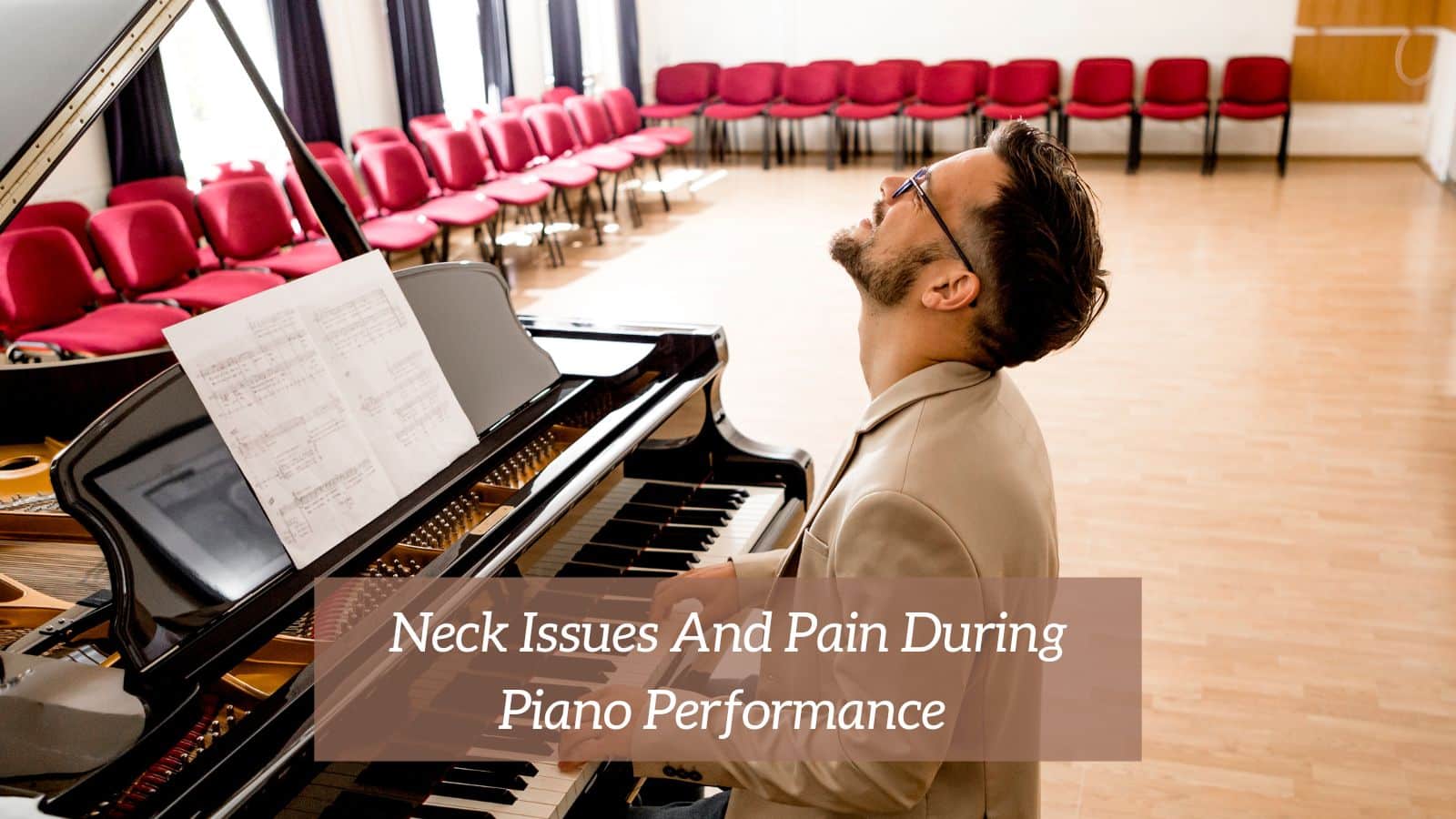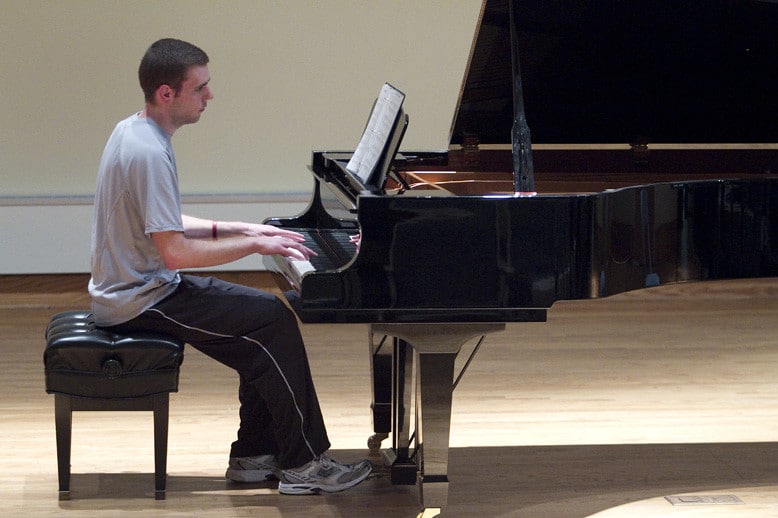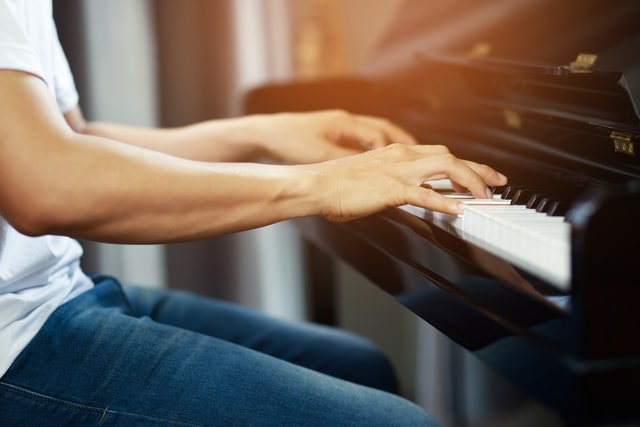
A prevalent source of neck and body pain during or after a musical performance, as has been thoroughly elaborated by the study of the Alexander Technique or the Feldenkrais Method, is the unneeded tension that a performer can bring to different parts of their body.
The cause is most commonly identified into different versions and bodily appropriations of anxiety or stress.
Neck Muscle Issue When Playing Piano
Usually, without even understanding it, performers tend to tense different muscles or parts of their bodies for no apparent reason, either right before or during musical (or dance or theatrical) performances.
This unnecessary tension acts as a heavy burden on the body, which might often result in continuous and irritating pain, or even muscle injuries and grave difficulty in performing.
Getting into posture and body technique, begin at bench height. The belly of your forearms should be at the same level as the keys while sitting up straight, with the arms also relaxed and stretching straight, and fingertips resting on the keys.
If you have set your seat low, you may find yourself instinctively raising your shoulders higher than needed or, even worse, bending your wrists. In either case, sitting too high or too low might cause neck, arms, fingers, back, or wrist pain.
Our muscles naturally function to release tension quickly. That is why there is an opposing muscle for every muscle.
Your biceps raises your arm, while your triceps lowers it. Your quadriceps are for going up, while your hamstrings are for going down. This is where many different teaching approaches fall short.
Without going into technical specifics, with the body and arms resting up, there must be equal and opposing motions to perform on the piano. Consequentially, there is no equal or opposing muscle force to deal with if you are completely relaxed.
You cannot hit a boxing bag if your fist touches the bag before the start of the punch. However, if you backswing your arm, it will land easily. Playing the piano and sitting at the piano ask for continual motion.
We just relax the muscles that are not in use. When one set of muscles is used, the other group relaxes. The first set relaxes when you utilize the other set.
If you strive to completely relax, you will produce a dual muscular pull in which both up and down muscles are stimulated at the same time, preventing either from relaxing.
Cramping sets in, your neck suffers, and you have to shake the stress out of your wrists. That tension can be caused by muscles that are unable to relax or by tendons that are being strained in two directions at the same time.
The torso, arm, hands, and all five fingers can only perform one function at a time. To prevent the strain of static loading, your shoulders, neck, back, abs, and arms must all move.
So, sitting there, your upper body too needs to be in subtle motion. Leaning in for instance helps place the shoulders, elbows, and then hands and fingers, where they want to go.
The fingers don’t just magically appear there as your shoulders and neck and back remain static. So, if you have tension, explore your equal and opposite muscles.
Working on technique may sound tedious, but it will help you learn to play better in less time while also preventing cramping and stiffness in different parts of your upper body.
If you practice in longer sessions, try to take a 3-5 minute break for every 10 minutes of playing for beginners and for every 20 minutes for more experienced players.
It is vital to relax your body or take a few steps around, giving it time to release possible tension, help circulation, and increase your focus.
The sooner you grow into playing the piano with the proper technique, the simpler it will be to play and your progress rate can dramatically increase.
Remember to listen to your body, be in touch with the unnecessary tension that you can create, and try to resolve it at any given chance.
As is highlighted by the Alexander technique, the back of the neck is the absolute center(as it connects the head to the spinal cord while “keeping it in place” and balancing it at the same time) of interest, when it comes to unwanted tensions created in the body during artistic performances.
Although it can take months of determined training for one to absorb and appropriate the lessons of the Alexander technique fully, some of its core values are relatively easy to understand.
For example, one of the most central exercises implemented in the Alexander technique is self-observation, a process during which the performer is lying down, slowing their breathing, and starts to try to closely observe if you are –without previously understanding it–creating tension in random muscles around the body (a realization that might quite often come with a surprise).
Another common exercise is self-observation during everyday activities(where the subject is trying again to evaluate muscle usage and tension during activities) and eventually during the performance itself.
The goal of the Alexander technique is to approach a natural movement flow while performing any type of art, unburdening the body of unnecessary tension in “sympathetic” muscles (as explained above) which can only cause damage, pain, and frustration.
Our hamstrings and triceps are so weak because our bodies naturally allow gravity to do the majority of the work. We let gravity pull us down to walk downstairs. We never actually need to press down when we are playing a phrase.
Gravity is pretty much taking care of it. If we build tension while seeming to be comfortable, our bodies definitely will end up paying for it again.
To sum up, relax consciously before playing, and keep an eye out for tension as you play. Back off, relax, and slow down if you observe this sort of stress.
Remember to breathe calmly as you play, especially in harder parts, where we often tend to hold our breath when we struggle. An instructor might also assist with the different types of tensions and aches we can create during a performance.
In general, we can argue that body training for piano performance is definitely worth it, even if just for a short period, to establish the core issues concerning posture and muscle use during playing.


